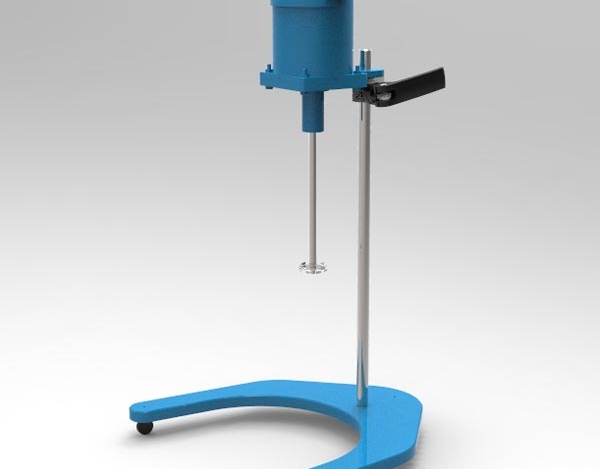Laboratory mixers are designed specifically to create homogenous mixtures of two or more liquids. These are used extensively in biotech labs where mixing chemicals is a staple requirement. They have found popularity in a variety of industries such as waste management, pharmaceuticals, cosmetics, food & beverage establishments, etc.
General mixer action
This type of equipment is driven by an internal motor that is activated when connected to a power source. They have a paddle/ blade set up at the mixing end, which spins in accordance with the motor, thus producing a suitable mixing action.
What makes a good laboratory mixer?
The mixers ought to have a quiet operation. A noisy motor tends to produce unwanted vibrations which can interfere with the mixing process, while a quiet motor is virtually vibration free, which enables you to achieve a uniform mix. Laboratory grade mixers are used in small scale operations, primarily for research purposes. Hence, they ought to be portable and light in weight. This will make it easy for the technician to handle the equipment without feeling fatigued.
These mixers ought to have an enclosed setup, which reduces any contamination on the internal electro-mechanical components. The blades and the shaft ought to be removable, which makes it easy to clean and replace in case of mechanical failure.
Choosing the right machine
One of the most common mistakes technicians make is to choose a shaker in place of a mixer. Although their functionalities are quite similar, the results they produce are vastly different. A mixer uses a set of blades to physically manipulate the contents of a beaker in order to produce a suitable mix; while a shaker merely presents a vibrating platform which produces the mixture.
Most commercial laboratory mixers available in the markets have variable speeds in order to handle liquids of different viscosities. Different liquids differ in a number of physical properties such as weight, volume, viscosity etc, which influences the homogeneity of the mixture. Using the right sized blades and the right speed is thus essential to achieve a suitable degree of mixture between the liquids.
The varying physical properties of different liquids also influence the speed of the mixer that has to be chosen by you. The mixer ought to be able to mix at a constant speed for a considerable amount of time; this is in order to achieve the necessary results within the set deadline. The best way to choose the right mixer is to have a clear understanding of the laboratory requirements. These properties will make it easier to find the right mixer to suit your needs. This website will help you buy the best laboratory equipment online; go for its exhaustive catalogs right away.




